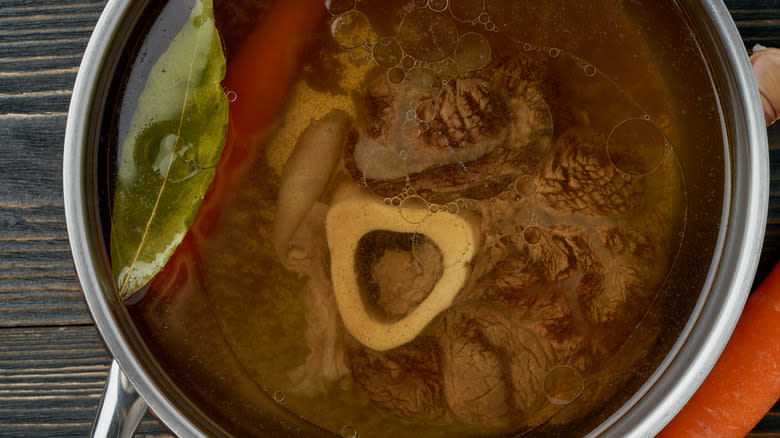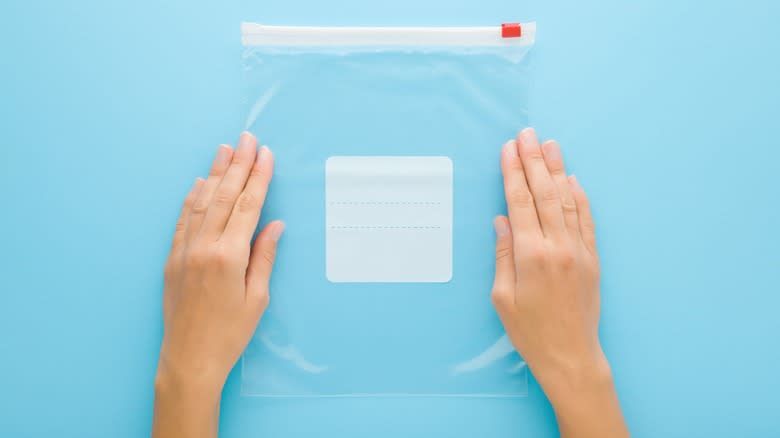A Plastic Bag Is The Key To Easily Separating Fat From Meat Drippings

Ever faced the challenge of separating fat from meat drippings while cooking? It's a common dilemma for anyone trying to make a succulent gravy or sauce, and there's a surprisingly simple solution that you probably have in your kitchen right now: a regular plastic bag. The main advantage of using a plastic bag is its simplicity and accessibility. Additionally, the clear plastic allows for easy monitoring of the separation process, ensuring you get just the right amount of juice without the fat.
Other traditional methods of fat separation come with their own sets of drawbacks. Using a spoon to skim fat from the surface of drippings can be tedious and imprecise, often resulting in either too much fat remaining or valuable, flavorful juices being discarded. On the other hand, specialized fat separator gadgets, while effective, are an additional expense and yet another item to store in your kitchen.
The technique of chilling the drippings overnight is another option where the fat solidifies at the top, after which it can be easily removed. However, this method is time-consuming and not practical when you need to prepare a meal within a limited time frame. It also requires sufficient refrigerator space, which might not always be available. Thus, the plastic bag method emerges as a practical, efficient, and user-friendly alternative.
Read more: Tips You Need When Cooking With Ground Beef
How To Separate Fat Using A Plastic Bag

To separate fat from your meat drippings, first allow the drippings to cool. Take a clean plastic bag and place it over a glass measuring cup, lining the inside of the cup like a bag liner. This setup will help stabilize the bag and make the process smoother. Next, use a strainer or sieve to pour the drippings into the bag. The strainer will catch any solid bits, so that only the liquid drippings enter the bag. This step is crucial as solids can hinder the separation process.
After transferring the drippings into the bag, let everything sit for a few minutes. During this time, the fat, being lighter, will naturally rise to the top, creating a distinct layer separate from the meaty juices. Once the separation is apparent, carefully lift the bag, holding it above the measuring cup. Snip a tiny hole in one corner of the bag at the bottom, and allow the meat juices to flow out slowly into the measuring cup. Be careful not to cut too much off, or everything will pour out too quickly.
As the juices are draining, watch the fat layer approach the hole. Just before it reaches the hole, pinch it with your fingers to stop the flow, effectively sealing it. At this point, you can either discard the remaining fat in the bag or collect it in another bowl separately if you wish to use it for a future recipe.
Read the original article on Tasting Table.

